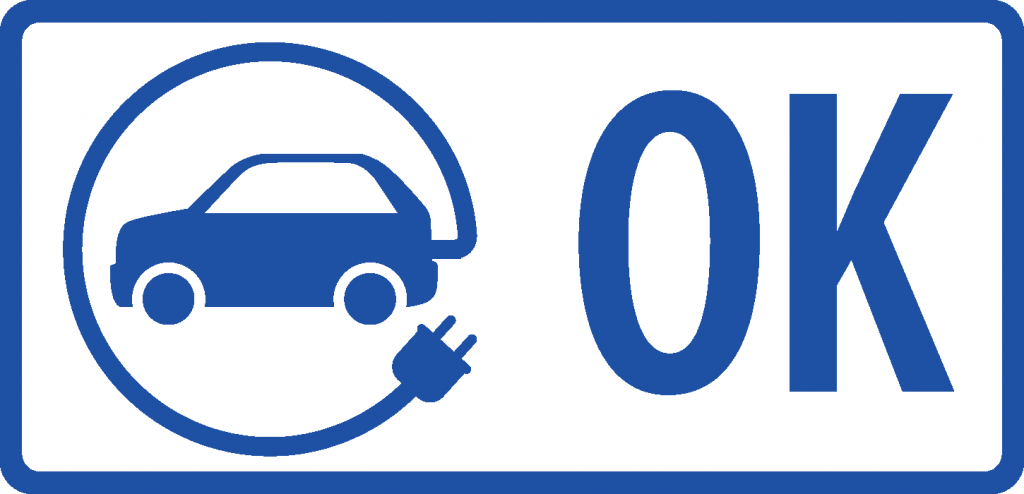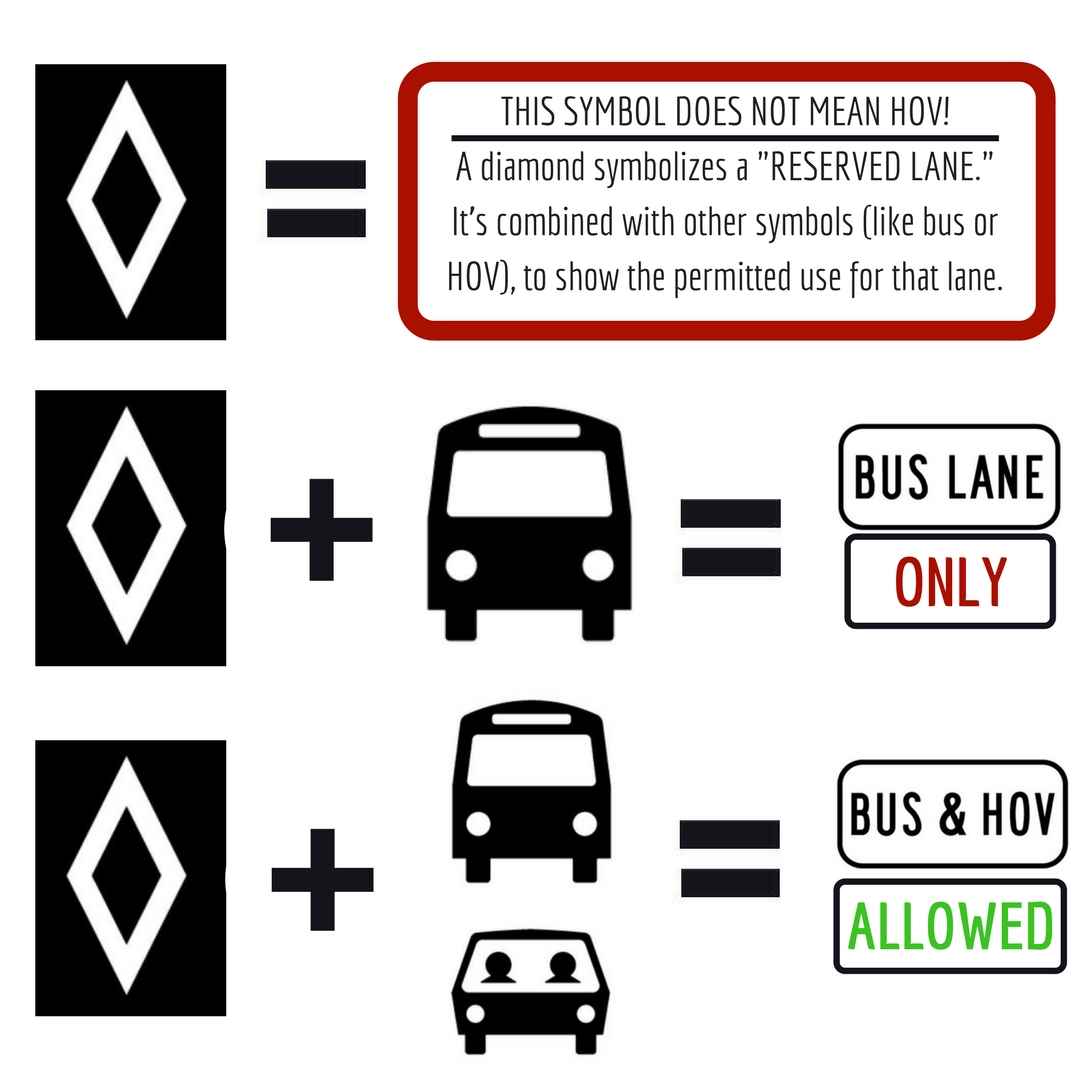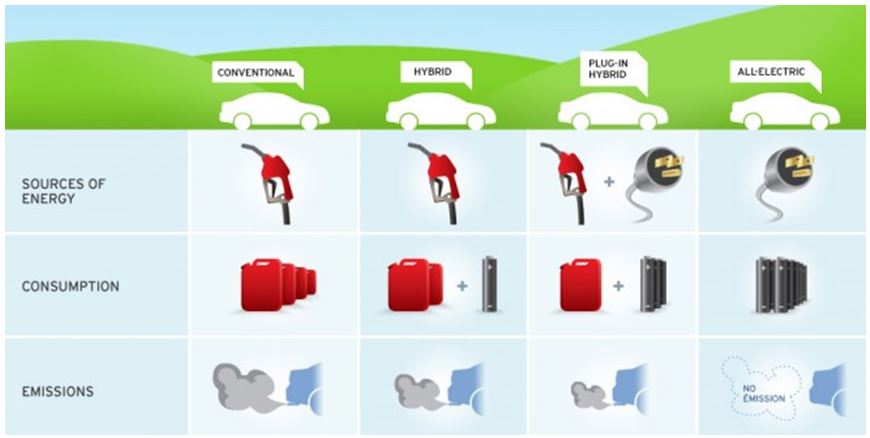
Plug in. Charge up. Go!
Owners of electric vehicles (EVs) can get a boost to their travel times thanks to recent legislation allowing them to use High Occupancy Vehicles (HOV) lanes in BC (regardless of the number of passengers being carried). HOV lanes were created to move more people in fewer vehicles, reducing congestion and greenhouse gas emissions. HOV lanes are in place on several provincial highways and urban corridors in the Lower Mainland and Kelowna. Allowing EVs to use HOV lanes is a great step toward greener transportation and a great incentive to encourage more people to purchase electric vehicles today.
First, determine if your EV qualifies. There are many types of EVs out there, and not all of them are eligible. Once you’ve confirmed your vehicle qualifies, you can apply for a decal and a permit. If you are looking for more information on EVs, like incentives, frequently asked questions, charging guidelines or benefits, our friends at BC Hydro, and Clean Energy Vehicles for BC have great resources you should check out.
EV/HOV FAQs Answered:
-
Why are we allowing single occupant electric vehicles to use HOV lanes?
-
What is an eligible electric vehicle under this program?
-
Are conventional hybrid electric (gas-hybrid) vehicles eligible?
-
Why are conventional hybrid electric (gas-hybrid) vehicles not eligible?
-
I live outside of B.C. (e.g in Washington) but frequently visit B.C. with my electric vehicle. Am I eligible to apply for this program?
-
How can I get a decal for my electric vehicle?
-
Is there a charge to participate in the program and obtain a decal?
-
Why is an electric vehicle HOV OK decal required?
-
How long does it take to receive a decal once an application has been submitted?
-
I have applied for my decal but have not received it yet. Can I start driving in the HOV lanes without it?
-
Where do I place the decal on my vehicle?
-
My decal was damaged. How do I get a new one?
-
What happens to the EV HOV decal if I sell my electric vehicle or return it from lease?
-
Where can I drive my electric vehicle with a decal?
-
Can I drive in a bus lane or vanpool lane with my EV HOV decal?
-
Can electric vehicles with a decal access every HOV lane in the province?
-
Can I drive on HOV lanes in a municipality?
-
Where are all of the HOV lanes located in B.C.?
-
What other vehicles are exempt from the occupancy requirements for an HOV lane?
-
Are there plans for more HOV lanes in B.C.?
-
What will happen if too many electric vehicles use the HOV lane?
-
What are the different types of electric vehicles (EVs)?
-
Are there any other incentives in B.C. for electric vehicle drivers?
- Why are we allowing single occupant electric vehicles to use HOV lanes?
Allowing electric vehicles in lanes reserved for high occupancy vehicles promotes the adoption of clean energy vehicles and supports B.C.’s commitment to reducing greenhouse gas emissions. - What is an eligible electric vehicle under this program?
- Electric vehicles that can be charged from an external electric charging station are eligible for the program.
- Hydrogen fuel cell vehicles are also eligible.
- An eligible vehicle list may be found here: https://www2.gov.bc.ca/assets/gov/driving-and-transportation/driving/hov/-pdfs/hov-eligible-vehicles.pdf
- For an electric vehicle to be eligible to operate in a HOV lane, the vehicle must display a decal issued by the ministry.
- Are conventional hybrid electric (gas-hybrid) vehicles eligible?
No. Gas-hybrid vehicles that use the vehicle’s engine to charge the battery and do not plug in to an external outlet are not eligible for the program. - Why are conventional hybrid electric (gas-hybrid) vehicles not eligible?
Gas-hybrid vehicles offer a more fuel-efficient technology than pure gas vehicles but still produce more emissions than an electric vehicle. In addition, due to the high number of gas-hybrid vehicles in the province including them in the program could result in too many vehicles using HOV lanes, which will decrease their effectiveness. - I live outside of B.C. (e.g in Washington) but frequently visit B.C. with my electric vehicle. Am I eligible to apply for this program?
Yes. Out-of-province vehicles are eligible for the program. The vehicle must be on the eligible vehicle list and a copy of the vehicle registration must be provided with the application. - How can I get a decal for my electric vehicle?
- Decals will be issued to eligible electric vehicle owners through an application process. Details on the application process can be found here.
- Drivers can apply online with their registration number and Vehicle Registration Number (VIN), which checks eligibility using the ICBC database. The registration number and VIN can be found on your ICBC vehicle registration form.
- Is there a charge to participate in the program and obtain a decal?
No. - Why is an electric vehicle HOV OK decal required?
- Many electric vehicles are hard to distinguish from gas vehicles as manufacturers use similar body frames for both types of vehicles.
- The decal helps police and other drivers identify vehicles that are in the program. This assists police in enforcing HOV lane use.
- How long does it take to receive a decal once an application has been submitted?
Please allow up to four weeks for processing once your completed application (including vehicle registration) has been received. - I have applied for my decal but have not received it yet. Can I start driving in the HOV lanes without it?
If you do not have a decal on your vehicle than you are unable to use the HOV lane and if pulled over by a police officer, you risk getting a ticket. - Where do I place the decal on my vehicle?
The decal must be displayed from the rear bumper or rear window of your vehicle and needs to be visible to other drivers and law enforcement. - My decal was damaged. How do I get a new one?
Apply for another decal on our automated application system on the EV HOV Program website. If you are already registered for a decal in the system, the system will prompt you for a reason for a replacement decal. - What happens to the EV HOV decal if I sell my electric vehicle or return it from lease?
The EV HOV decal stays with the vehicle. If you sell or return a leased electric vehicle with the decal, the decal may remain with the vehicle and the new owner can use the vehicle with the decal, without requiring a new application. If the former owner obtains a new electric vehicle, they are required to submit a new application for an EV HOV decal. - Where can I drive my electric vehicle with a decal?
You can drive your electric vehicle (with decal) in HOV lanes. Click on graphic below for additional information on HOV lane symbols and what they mean.

- Can I drive in a bus lane or vanpool lane with my EV HOV decal?
There are two types of reserved lanes in B.C. – HOV lanes and bus lanes. EVs with a decal may only drive in HOV lanes. Bus lanes are reserved for buses only. Therefore, EVs with decals cannot drive in bus lanes. A vanpool lane is a type of bus lane. EVs with decals cannot drive in vanpool lanes without meeting the posted minimum occupancy requirement. *Municipal exceptions may apply. See your municipal website for more information. - Can electric vehicles with a decal access every HOV lane in the province?
Yes. EVs with a decal can drive in all HOV lanes in B.C. without meeting passenger number requirements (but not bus or vanpool lanes), unless a sign is posted indicating otherwise. - Can I drive on HOV lanes in a municipality?
Yes. You can drive in HOV lanes on municipal roads, unless there is a sign indicating otherwise. - Where are all of the HOV lanes located in B.C.?
A map of provincial (ministry-operated) HOV lanes is available under the Benefits tab here. There may be additional HOV lanes under the jurisdiction of municipalities. Please contact the individual municipality for more information on their HOV lanes. - What other vehicles are exempt from the occupancy requirements for an HOV lane?
Other types of vehicles that do not have to meet the occupancy requirements include.- emergency vehicles;
- marked vehicles that are aiding a disabled vehicle in the HOV lane;
- peace officers while on duty;
- taxis;
- motorcycles;
- HandyDART vehicles; and
- blood services vehicles, when transporting blood.
- Are there plans for more HOV lanes in B.C.?
Whenever we upgrade or construct a new highway, the Province considers the best way to move vehicles and this includes research, analysis and possible addition of HOV lanes. - What will happen if too many electric vehicles use the HOV lane?
- The ministry will continue to monitor HOV lane traffic volumes. If a lane becomes congested, and the level of service decreases, the ministry could consider prohibiting use of the lane by electric vehicles, and post a sign indicating as such.
- This can be done on a case by case or a highway by highway basis.
- What are the different types of electric vehicles (EVs)?
- Battery electric vehicles (BEVs): These vehicles have an electric motor and are powered exclusively by electricity, unlike a hybrid car, which is fueled by gasoline and uses a battery and motor to improve efficiency. They plug-in to charge and produce zero tailpipe emissions. A Nissan Leaf is an example of a battery electric vehicle.
- Plug-in hybrid electric vehicles (PHEV): These vehicles have both an electric motor and internal combustion engine (for back-up/complimentary power). An extended range electric vehicle (EREV) is a type of PHEV. As with driving a conventional vehicle, air pollutants and greenhouse gas emissions are produced when PHEV is running on gasoline. However, zero emissions are produced when PHEV is running in electric mode. These vehicles plug-in to recharge. A Chevrolet Volt is an example of a plug-in hybrid.
- Fuel-cell vehicle (FCV): Unlike a battery that stores and releases energy, this type of vehicle generates electricity from hydrogen and oxygen. FCVs fill up with hydrogen in a similar manner as a gas pump and emit only water vapour.A Hyundai Tuscon FCV is an example of a fuel cell vehicle.
- Hybrid electric vehicles (HEVs): Also called “conventional hybrids.” Although this type of EV is similar to BEV and PHEV (has two types of energy storage units – electricity and fuel), the energy comes entirely from gasoline and regenerative braking. The main function of the electric motor component is to increase efficiency of the combustion engine; HEVs cannot be plugged in to be recharged. HEVs also produce emissions at all times. Compared to traditional non-hybrid gasoline powered vehicles, HEVs produce fewer emissions due to improved efficiency of the electric motor. A Toyota Prius is an example of a conventional hybrid vehicle. Hybrid vehicles are not eligible for the EV decal program.
Energy, consumption, and emissions from different vehicle types

Source: https://evtalk.com - Are there any other incentives in B.C. for electric vehicle drivers?
The Province of B.C. has an incentive program that offers purchase rebates for battery electric, plug-in hybrid, and fuel cell vehicles. See: https://www2.gov.bc.ca/gov/content/industry/electricity-alternative-energy/transportation-energies/clean-transportation-policies-programs/clean-energy-vehicle-program/cev-for-bc.
You can also contact the EV HOV Program, folks directly:
Telephone: 778 974-5470
Fax: 250 356-0897
Mailing Address: PO Box 9850 STN PROV GOVT Victoria BC V8W 9T5
Email: EVHOV@gov.bc.ca
Happy (and greener) trails!
Do you have a question about this or any other transportation topic? Connect with us on Twitter, Facebook or in the comments below and we will be happy to help.
Join the discussion